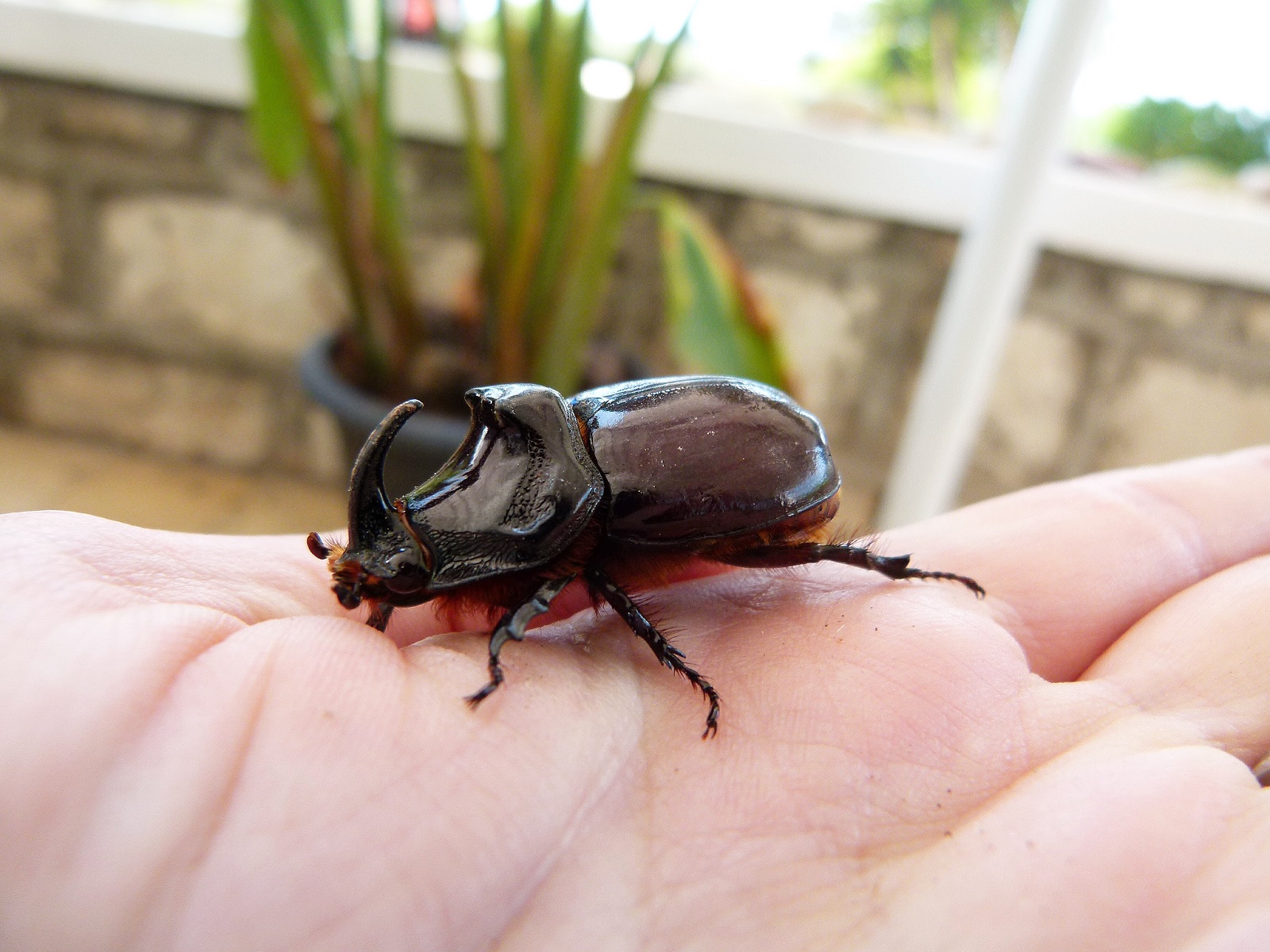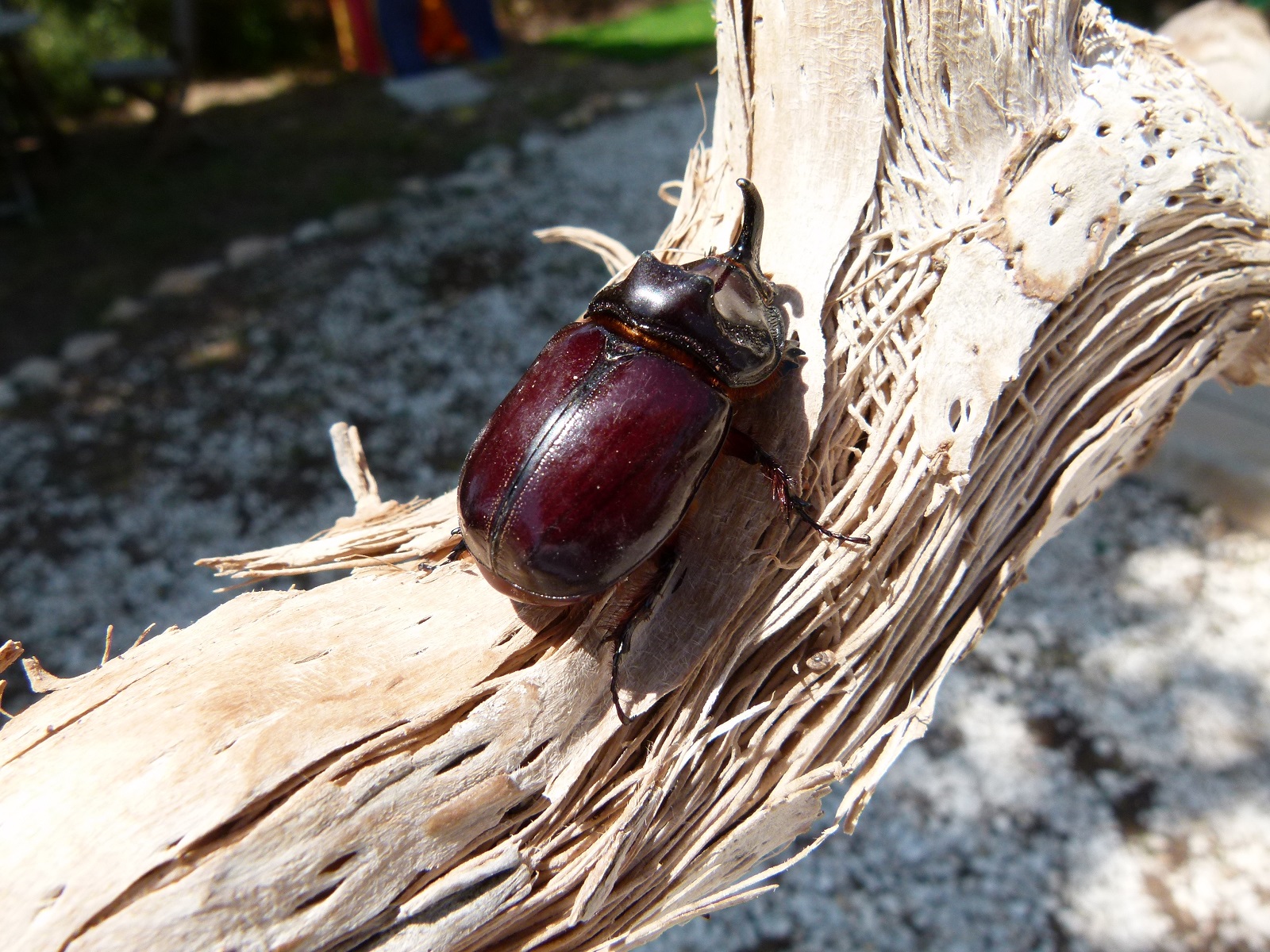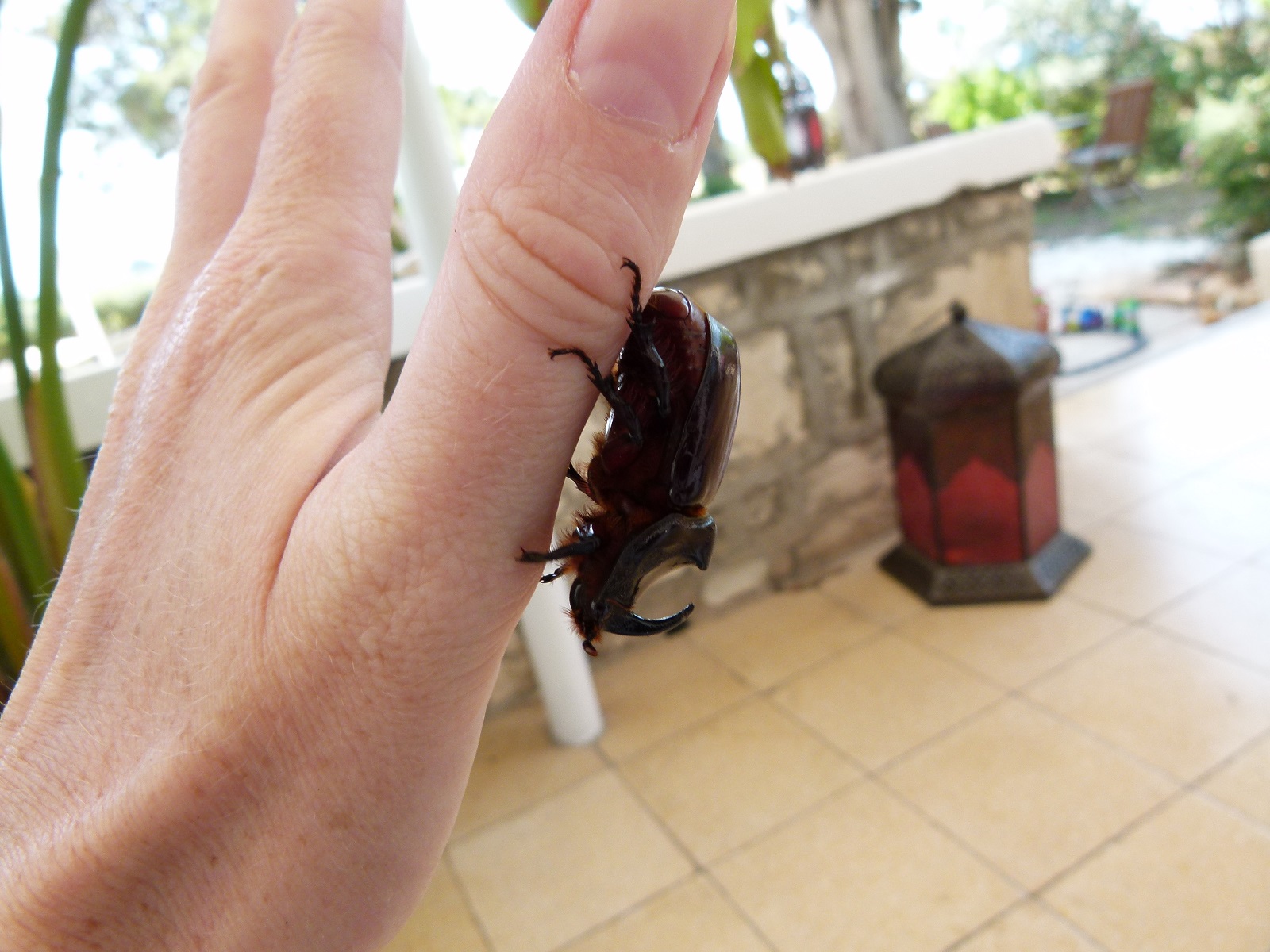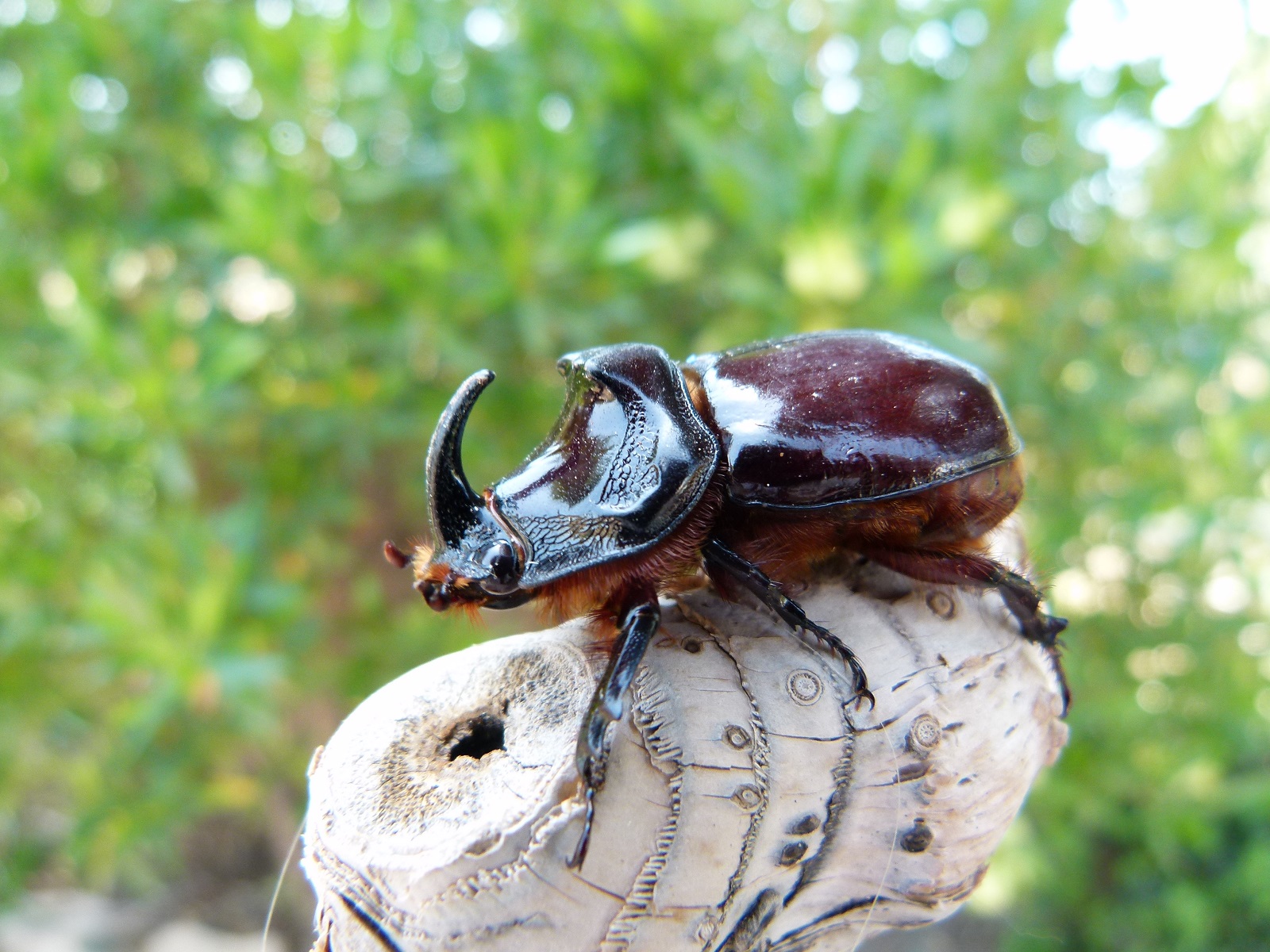

Goobie found it. It was lying on its back with its legs in the air, pretending to be dead. A survival strategy? It needn’t have bothered – but perhaps it doesn’t realise that it looks like something out of Jurassic Park. No doubt the wildlife population in the garden is suitably intimidated.
This is the European Rhinoceros Beetle. Our one is an inch and a half long and is a male – the females don’t have a horn. When we helped it back onto its legs, it was strong enough to move one of the small garden lanterns. Apparently they can lift 850 times their body weight. They spend two years of their life as larvae living in rotten wood. Once they’ve grown into adults they come out between March and May and live just a few months until the Autumn.

What we didn’t realise at first was that our beetle was keeping a secret. Beneath its impenetrable armour is a pair of wings! At dusk these beetles fly around. Why? Haven’t a clue. Perhaps to find a lady? Enjoy the evening air? Escape our four cats? They don’t fly around to find food, since this beetle doesn’t eat. As an adult, it uses reserves stored up while it was in the larval stage.

Despite its appearance, the European Rhinoceros Beetle is a total softie and completely harmless – unless you are another male Rhino beetle and there’s a lady around, then the sharp horn comes in handy. I was able to pick it up without suffering any amputated fingers. Actually, it was quite interesting to see how it grips things (i.e my skin) with a tiny claw at the end of each leg.

Goobie and I took the Rhino beetle into the garden for a closer look in better light. It has red fur underneath it and the wing casing on its back is actually a chestnut colour. I read that they like areas where there’s lots of dead wood, so Goobie ran around the garden collecting twigs. He then built a ‘nest’ for it under a shrub and we let the beetle go. Within minutes it had burrowed itself under the twigs and disappeared.

As I watched the Rhino beetle use its claws to climb and burrow, I realised that when Goobie found it on its back on the veranda, it wouldn’t have been able to grip onto anything to turn itself back over – the tiles are too smooth. I guess it would have died eventually, or been eaten by a cat.
So if you see a beetle on its back, be a softie and turn it over – in case it’s still alive.

Leave a Reply